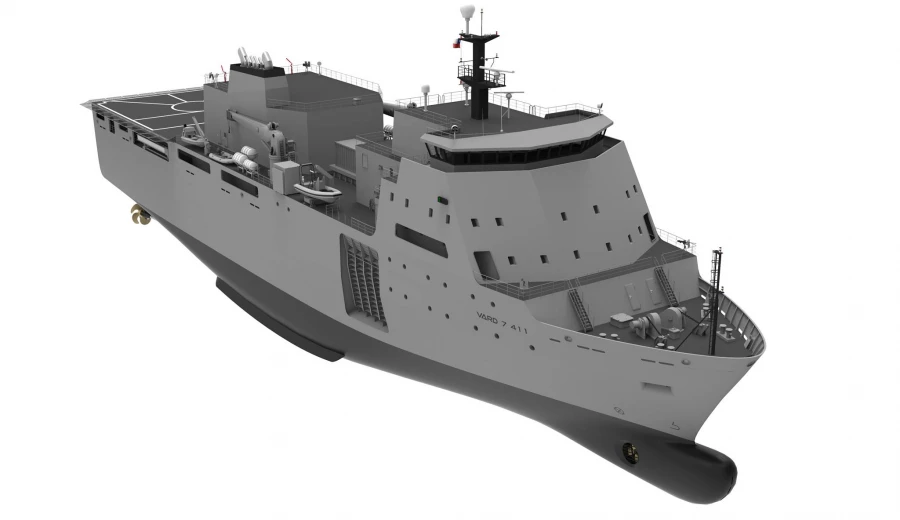By Nicolás García
The Chilean Navy and Astilleros y Maestranzas de la Armada (Asmar) signed on August 31, 2022, the contract for constructing two multipurpose ships of the Escotillon IV Phase 1 project for US$409.9 million with an execution period of 100 months.
The construction of the first two units, out of four planned units, will enable the institution to incorporate a new generation of ships that will modernize and improve the deployment capabilities of the Amphibious and Naval Transport Command (Comanfitran) in both military and humanitarian operations.
According to the Annual Report and Financial Statements 2022 of Empresa Estratégica de Defensa de Chile, as of the date of the signing of the contract for the development of the design and manufacture of two multipurpose amphibious transport ships for the Chilean Navy, the shipyard began the procurement process of equipment, materials, and supplies.

According to the document, the Chilean shipyard expects to start construction of the first unit of the Escotillón IV Phase 1 project in 2023 with the arrival of the steel at the Talcahuano industrial plant.
The report details that two suppliers were individually awarded contracts in 2022 that represented more than 10% of the total purchases of goods and services during that year in Asmar.
ROLES AND CHARACTERISTICS OF THE VESSELS
The Navy’s Directorate of Programs, Research, and Development (Diprida) and Asmar signed a contract in June 2020 to develop a basic design for the construction of amphibious transport ships, awarded to the Canadian company Vard Marine.
The Escotillon IV project began symbolically on February 27, 2022, by cutting the plate of the first unit at Asmar’s Talcahuano industrial plant.
The main roles of the new units will be the transport of personnel and military equipment to conduct amphibious operations and the administrative transport of troops and military vehicles.
As for secondary functions, the vessels will provide humanitarian aid in disaster support operations and administrative transport of personnel and cargo in peacetime for logistical support or connectivity of isolated territories.
The vessels will have a length of 110 m, a beam of 21.8 m, a depth of 13.8 m, a displacement of 7,987 tons, diesel-electric propulsion, propulsion power of 11,200 kW, and electric power of 6,000 kW.
They will reach a maximum speed of 17 knots and an economical speed of 12 knots, a range of 30 days, a traversable distance of 7,000 nautical miles, and an operating capacity of 187 days per year.
Twenty-one officers and 74 seafarers will operate them and will be able to carry an embarked force composed of a commander, an Amphibious Task Force (ATF) staff, a Marine Infantry Battalion (MI) commander, 16 MI officers, and 231 MI soldiers.
They will have two remote weapons stations (RWS) with 20 mm cannons in the bow and two RWS with 12.7 x 99 mm machine guns in the stern.
They will have a deck for transporting rolling stock and containers and an infirmary with medical support capability.
They can operate Airbus Cougar, Dauphin, or Sikorsky Black Hawk helicopters and unmanned vertical take-off and landing (VTOL) vehicles.
They will have an organic vessel that will allow the disembarkation of vehicles and cargo in any part of the national territory.
With information from Infodefensa

